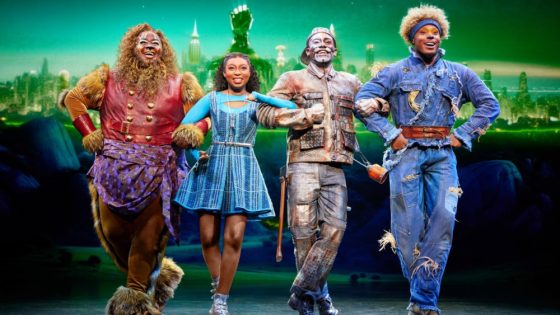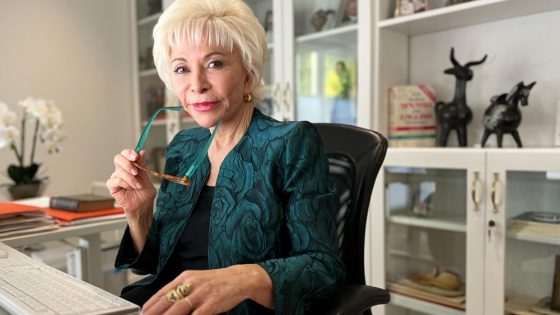A flight of imagination born of the trippy 1970s, “The Wiz” can shoulder a lot of interpretation. Sidney Lumet’s shadowy film, starring Diana Ross and Michael Jackson, sets the Black spin on L. Frank Baum’s children’s story “The Wonderful Wizard of Oz” in a blighted, nearly bombed-out New York City. High schools and community theaters have surely long made do with their prop closets, as the musical by William F. Brown (book) and Charlie Smalls (music and lyrics) is a vibes-based vehicle for a familiar plot and foolproof hits like “Home” and “You Can’t Win.”
But the maximalist revival that opened at the Marquis Theater on Broadway tonight, following a 13-city national tour, diminishes some of the show’s reliable pleasures with unmitigated, candy-colored exuberance. This family-friendly approach — bright, broad, unironic — aligns with the musical’s legacy as a VHS favorite, but even kids could use help knowing where to look. Dizzying visuals and overamplification too often swallow both actors and storytelling in a swirling sensory overload.
Directed by Schele Williams, the production begins promisingly with an intimate exchange between Dorothy (newcomer Nichelle Lewis) and Aunt Em (Melody A. Betts), comforting her city-girl niece who’s being bullied at her Kansas school. Rendered in grayscale as an homage to the Judy Garland film, the scene invites tender emotional engagement with the reluctant, soon-to-be heroine.
But that opportunity for connection swiftly gets swept away in the one-way twister to Oz, where a hypercolor surge of stimulation competes for audience attention. Excess is the defining trait of a fantastical realm otherwise lacking a unified look: storybook scenery (by “Black Panther” designer Hannah Beachler) contrasts with uncanny projections (by Daniel Brodie) that resemble Roku City crossed with Middle Earth; costumes (by Sheren Davis) burst with embellishments in yellow, orange, turquoise and pink. The already itinerant plot feels all the more disjointed when each scene appears to take place in a different CGI-augmented world.
That nearly every surface seems overworked presents not just an aesthetic hurdle but a dramatic one, as Dorothy and the companions she collects while easing down the road — Scarecrow (“The Voice” alum Avery Wilson), Tinman (Phillip Johnson Richardson) and Lion (Kyle Ramar Freeman) — recede from the busyness even when they’re meant to pop.
Part of the problem may be technical; it is often difficult to hear Smalls’ lyrics over the orchestra’s wall of sound except when the actors are belting over it. That includes Deborah Cox, whose instrument is unmistakable but overpowered in her first appearance as Glinda. Lewis, who has an appealing, delicate voice and a modest presence, comes to feel like a background player in her own adventure (perhaps ditching Toto from the script doesn’t help). Among the principals, Richardson is a standout with his liquid, riffy take on “What Would I Do if I Could Feel” and joint-swiveling way with JaQuel Knight’s invigorating choreography.
Hip-hop moves provide the production’s most electrifying moments, particularly in “The Emerald City” sequence, which also includes soulful steps in the spirit of the ‘70s source material. As the title character, figured here as a suave charmer, Wayne Brady also demonstrates an impressive, hip-popping dexterity.
Revisions to the book, by comedian Amber Ruffin, elaborate the backstories of Dorothy’s friends, though trying to make more sense of the head-scratching plot is probably futile. Sustained attempts at updated humor are intermittently successful; they ask for a degree of knowing side-eye from a production that is unwaveringly earnest and cheerful. Even the arrival of the Poppies, a transparent metaphor for vice, is oddly staged on a set of cubby shelves that appear lifted from a school classroom.
Without the dark, threatening corners, this Oz comes across more like a playground than a coming-of-age purgatory (the last wicked witch standing, Betts’ Evillene, registers as mildly menacing and is defeated with a small splash). Why does this Dorothy want to go home and what has she learned? If she was looking for somewhere to belong, she seems to have found just the place. But maybe her senses could use a break.
Source Agencies



